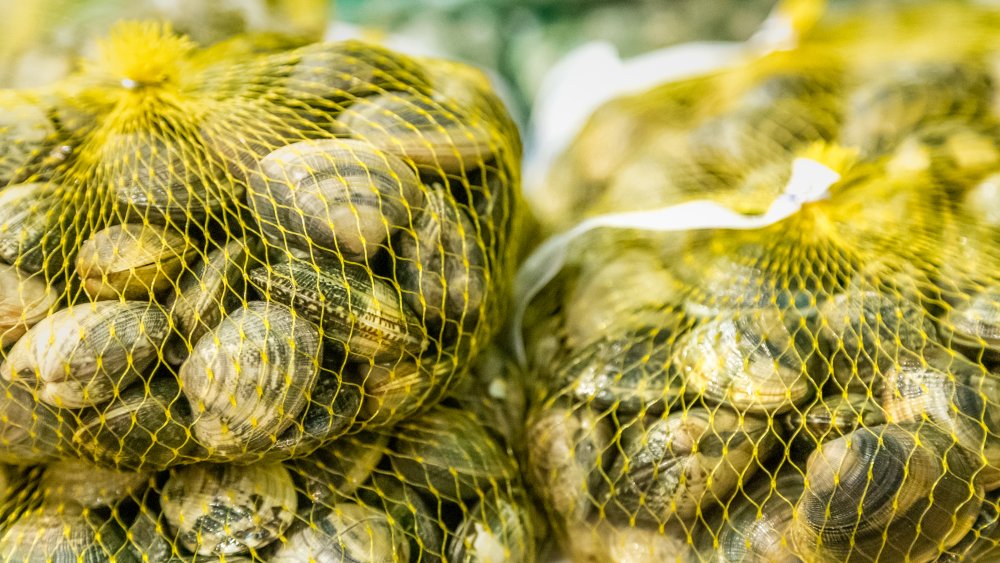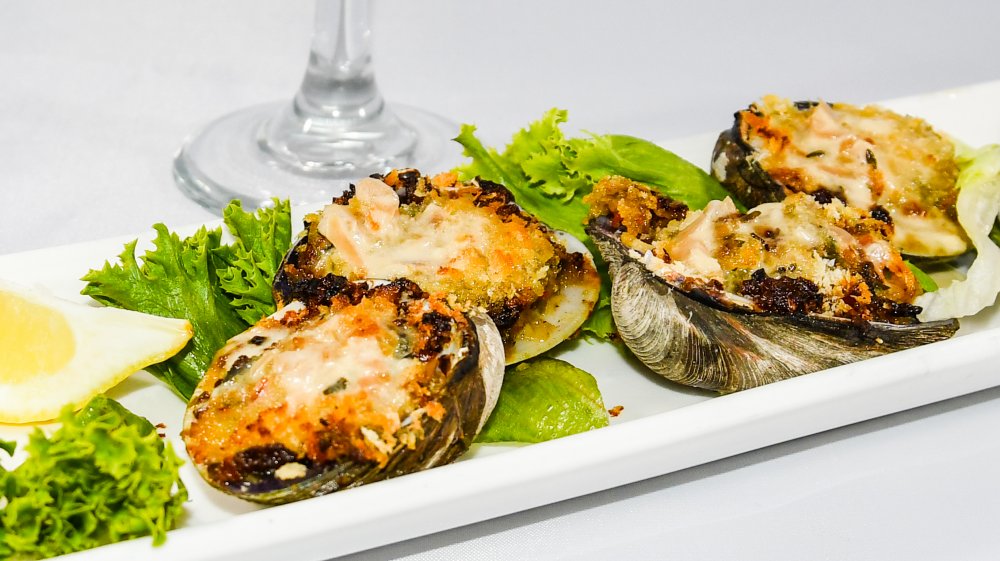This Is The Best Way To Store Clams
Whether you were lucky enough to spend the day in shallow waters happily digging in the sand for clams or you timed your weekend farmers market visit right and scored a haul of littlenecks, the question of storage is equally as pertinent. So, what exactly are you supposed to do with a multitude of mollusks until you plan on eating them? The good news is there's an easy method for storing clams with no special equipment required.
According to Bon Appetit, clams should be stored in a way that helps keep them alive. This means giving them room to breathe. They should definitely not be sealed in Tupperware or anything that would prevent air circulation, but they can be placed in the refrigerator at a temperature of 40 degrees Fahrenheit underneath a damp cloth. The bad news for procrastinators is that they must be used within two days, and any clam that dies in the meantime should not be consumed.
Storing and cooking clams
After properly storing your clams, there are a variety of creative ways to prepare them when you're ready to cook. The first step is always the same: soak them to get the sand out. Like all timeless beauties, after a good, long soak, the clams will be ready for the main event. How you decide to cook them may depend on what type of clams they are.
Different types of clams suit different preparation styles. Steamers, also known as soft-shells, can be shucked and fried whole, or, like their name suggests, can be steamed and served with clarified butter, seafood Fun Dip style. Atlantic razor clams, the bivalves that share a striking resemblance to barbershop tools, make for good ceviche, while the smallish cherrystones can be grilled or tossed in as a tasty addition to pasta.
The larger topneck clams can be used to make a classic clam dish, clams casino. Kitchn describes this dish simply as "fresh clams topped with breadcrumbs and bacon, and broiled until crispy." Now, there's an appetizer we'd be willing to clam-ber over other party guests to get first dibs at.

